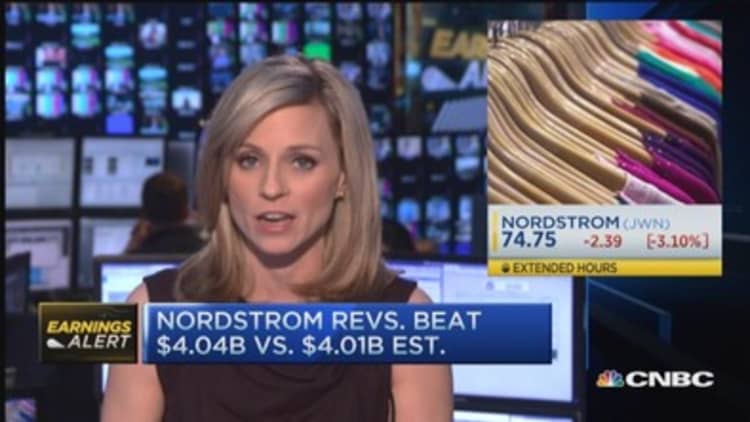Trying to build out your retail business while ignoring the Web? Good luck.
That's the message Wall Street has been sending to retailers ever since Amazon rewrote the rules of the business, making sound online and mobile strategies critical to a company's survival.
It's been with good reason. Retailers that failed to keep up with the shift are being run out of business, as online sales growth continues to outpace that at traditional stores—a trend that's expected to continue this year.
So how is it that TJX and Ross, two retailers whose sales growth is outpacing the overall industry, are able to do so with limited—if any—online revenue?
"It's more so the value proposition and how strong that is that's really driving the sales," said Anne Zybowski, vice president of retail insights at Kantar Retail. "It just speaks to how much people are responding to these value channels."
Par for the course
It's common for low-price retailers to transition more slowly to the Web, as their modest price tags make it difficult to turn a profit among high shipping costs. That's the reason why management at Ross, where the average price of an item is $10, has said it has no plans to launch its brand there.
At TJX, online sales account for only about 1 percent of its revenue. Among its three U.S. nameplates,T.J. Maxx, Marshalls and HomeGoods, only T.J. Maxx is currently offered online.
Read MoreWhy Macy's latest bid for growth may struggle
But the retailer plans to expand in the online arena. On a call with investors last week, CEO Carol Meyrowitz said she can see the company rolling out Web operations for all its retail brands, adding that Marshalls is next on deck. TJX also owns online retailer Sierra Trading Post, which it acquired in 2012.
"We are pleased to see the site attracting new customers and we are gaining incremental visits from our existing bricks-and-mortar shoppers," Meyrowitz said. "A vast majority of our returns are going to our stores, which is a great way to introduce our online customers to our physical locations."
T.J. Maxx upped its online offering by 1,700 brands and 11 departments in 2014, and will continue to expand into plus sizes and other categories this year.

Despite lagging behind their full-price counterparts on the Web, the off-price segment—defined as companies that sell name-brand goods at a discount—continues to gain share. According to data from Customer Growth Partners, sales in the off-price category are growing at more than twice the rate of apparel overall.
At TJX, revenue increased 6 percent year over year in 2014, to $29.1 billion. At Ross, it grew 8 percent to more than $11 billion.
Read MoreThese retailers getting most 'bang for the buck'
Those increases are particularly impressive given that sales growth at physical stores continues to lag that of the Web. Whereas the National Retail Federation predicts retail sales excluding autos, gas stations and restaurants will grow 4.1 percent in 2015, it forecasts online and other nonstore sales will increase between 7 and 10 percent.
"There have ... been some concerns in the marketplace that the off-price value proposition may have become less relevant over time due to the rise of new disposable fashion players ... and the increasing importance of digital capabilities," ISI analyst Omar Saad wrote in a note to investors after Ross' earnings results.
"However, strong sales and expanding gross margins are evidence that consumers still find significant utility in [Ross'] differentiated, brands-at-a-value, 'treasure hunt' customer experience."
Not so great expectations
Another reason off-price retailers have been able to get away with limited Web capabilities is that consumers don't expect them to operate there, Kantar's Zybowski said. That's because their stores have more of the "treasure hunt" feel Saad mentioned, where shoppers never know what they'll find when they arrive at the store—and therefore wouldn't expect the online offerings to match.
However, Zybowski doesn't expect customers' low expectations to last long. As outlet stores and names such as Nordstrom Rack build out their digital capabilities, she said consumers will come to expect off-pricers to be online in a greater capacity than simply communicating over social media—a key way T.J. Maxx and Marshalls stay relevant today.
Read MoreLong live the Web: Online sales top expectations
A recent report by Sterne Agee analyst Ike Boruchow backs up this conclusion. According to a survey of more than 1,000 U.S. women, among respondents who said they have never shopped at off-price stores, 27 percent said it's because they prefer to shop online.
Similarly, among those who said they've cut back on off-price spending, the most popular reason cited was that they'd rather shop online.
"This limitation of the off-price model could become a larger headwind over time," Boruchow said.


